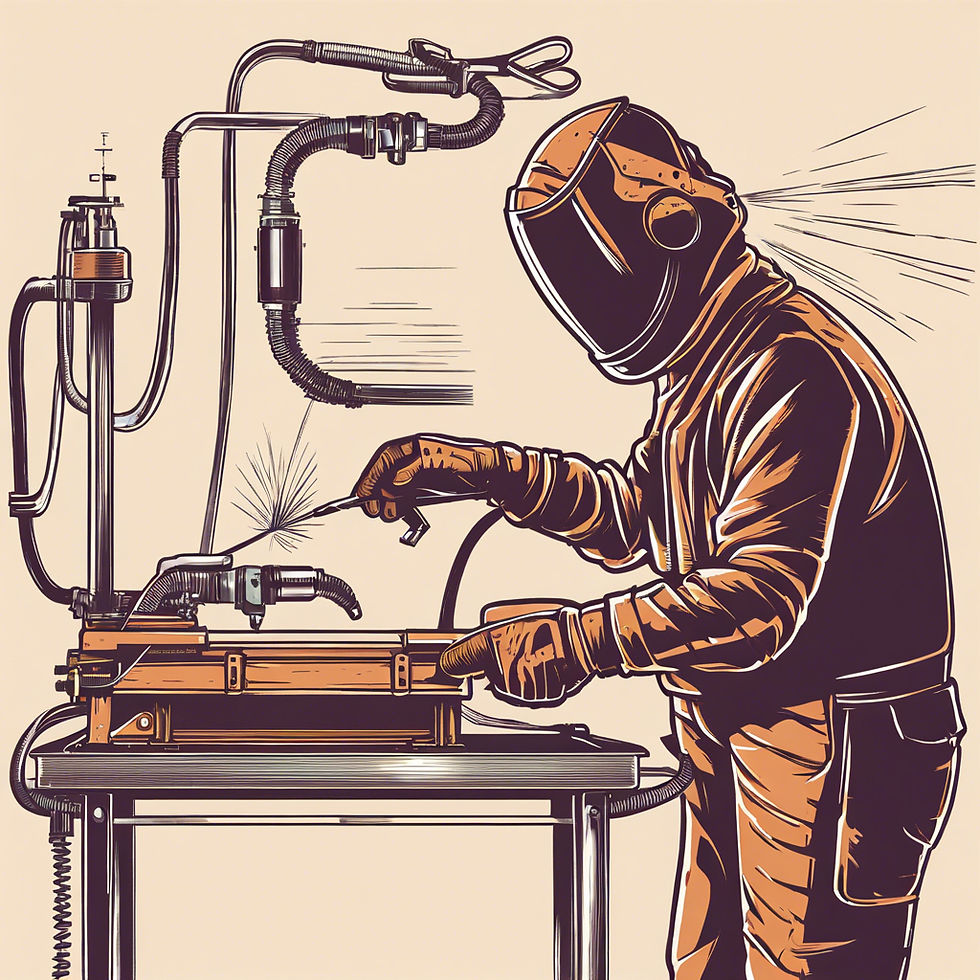The Ultimate Guide to LEV Inspections: Ensuring Safety and Compliance with OR Group LTD
- Helen Thomas-O'Brien
- May 22, 2024
- 3 min read

In industries where hazardous substances are present, maintaining a safe working environment is crucial. Local Exhaust Ventilation (LEV) systems are essential for controlling exposure to harmful airborne contaminants. This comprehensive guide will explore the importance of LEV inspections, the legal requirements, the types of systems that need to be inspected, the frequency of these inspections, and what OR Group LTD does to ensure your LEV systems are safe and compliant.
Why Are LEV Inspections Needed?
LEV inspections are essential for several reasons:
Health and Safety: The primary goal of LEV inspections is to protect workers from exposure to hazardous substances, reducing the risk of respiratory diseases and other health issues.
Compliance: Adhering to LEV regulations is a legal requirement in the UK. Non-compliance can result in substantial fines and legal consequences.
Operational Efficiency: Regular inspections ensure that LEV systems function efficiently, preventing costly downtimes and maintaining a safe working environment.
Insurance: Compliance with LEV regulations is often a condition for insurance coverage. Regular inspections help ensure that your systems meet insurer requirements.
The Legalities of LEV Inspections
The Control of Substances Hazardous to Health (COSHH) regulations mandate that employers must prevent or adequately control exposure to hazardous substances. Key legal requirements for LEV systems include:
Thorough Examination and Testing: LEV systems must undergo a thorough examination and testing at least every 14 months.
Record Keeping: Comprehensive records of all inspections, testing, and maintenance activities must be maintained.
Performance Standards: LEV systems must be designed and maintained to meet specific performance standards to ensure effective control of airborne contaminants.
Failure to comply with these regulations can result in legal action, including prosecution and fines.
Types of Systems That Require LEV Inspections
LEV systems are used in a wide range of industries and applications, including but not limited to:
Welding Fume Extraction: Systems designed to remove harmful welding fumes from the work area.
Dust Extraction: Systems used in woodworking, construction, and manufacturing to control dust levels.
Chemical Fume Hoods: Ventilation systems used in laboratories to capture and contain hazardous chemical vapors.
Spray Booths: Systems designed to control overspray and fumes in painting and coating applications.
Soldering Fume Extractors: Systems used to remove fumes generated during soldering processes in electronics manufacturing.
Any system designed to control exposure to hazardous airborne contaminants needs to be inspected under LEV regulations.
Frequency of LEV Inspections
The frequency of LEV inspections is mandated by COSHH regulations and typically includes:
Every 14 Months: A thorough examination and testing of LEV systems must be conducted at least every 14 months.
Additional Inspections: Additional inspections may be required if there are significant changes in the process, modifications to the system, or after repairs.
What OR Group LTD Does During LEV Inspections
When OR Group LTD conducts an LEV inspection, we follow a detailed process to ensure your systems are safe and compliant:
Initial Assessment: We start with a thorough review of your existing documentation, including previous inspection reports and maintenance records.
Visual Inspection: A comprehensive visual inspection is performed to identify any signs of wear, damage, or blockages in the system.
Performance Testing: We conduct performance tests to measure the airflow and capture efficiency of the LEV system, ensuring it meets the required standards.
Smoke Testing: Where applicable, we use smoke testing to visualize the airflow patterns and identify any areas where the system may be underperforming.
Ductwork Examination: We inspect the ductwork for any leaks, blockages, or damage that could affect system performance.
Filter Inspection: Filters are checked to ensure they are clean and functioning correctly, and any necessary replacements are noted.
Detailed Reporting: After the inspection, we provide a comprehensive report detailing our findings, including any defects or areas of concern, along with recommendations for corrective actions.
Compliance Certification: Once the system passes the inspection, we issue an LEV compliance certificate, which serves as proof that your system meets all regulatory requirements.
Why Choose OR Group LTD for Your LEV Inspections?
At OR Group LTD, we are committed to delivering high-quality inspection services that prioritize safety and compliance. Here’s why you should choose us:
Expertise: Our team consists of highly skilled and experienced inspectors who are well-versed in LEV regulations and best practices.
Comprehensive Service: We offer a full range of inspection services, from initial assessment to certification, ensuring your systems are thoroughly evaluated.
Competitive Pricing: We provide cost-effective inspection solutions without compromising on quality.
Customer Focused: We work closely with our clients to understand their specific needs and tailor our services accordingly.
Conclusion
LEV inspections are crucial for maintaining a safe and compliant workplace, especially in environments where hazardous substances are present. By partnering with OR Group LTD, you can be confident that your LEV systems are in capable hands. We are dedicated to helping you achieve operational excellence and ensuring the safety of your workforce.
For more information or to schedule an LEV inspection, contact us today at 0330 043 4773 or visit our website at www.orgroupltd.com.
Stay safe, stay compliant.




Comments